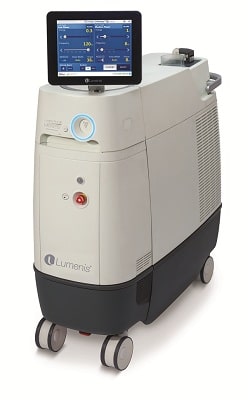With several years’ experience treating benign prostatic hyperplasia (BPH) and kidney stones with the Lumenis MOSES Pulse 120H holmium laser with MOSES Technology, I have seen very meaningful benefits for my patients in terms of both outcomes and recovery. The technology has been so influential that it has actually allowed us to change BPH surgery from an overnight stay to an outpatient procedure.
To appreciate the difference, consider how patients with BPH present before surgery. Some have variable symptoms (slow or intermittent urine stream, frequent urination, the need to push to urinate), while others with significant obstructing prostate have urine retention, which requires catheterization and can lead to severe complications (repeated bladder and kidney infections, urethral strictures). The condition is deleterious to both patients’ health and their quality of life. I choose to perform holmium laser enucleation of the prostate (HoLEP) using the Holmium laser because, with it, my outcomes are highly predictable and superior to any other BPH procedure. From the patient’s perspective, objective AUA symptom scores show an average increase of 15 points – a significant improvement in the quality of life after HoLEP. This approach gives them relief from urinary symptoms as well as an easy recovery, thanks to these key benefits:
- Less bleeding, less damage, less pain, and irritation – Patients experience no pain after HoLEP. Irritation is minimal and usually related to the catheter. We can attribute these benefits to the holmium laser’s precision and coagulation. This cutting tool has a shallow depth of penetration into the tissue, so we can work very precisely, in contrast to other technologies such as a green light laser that can cause charring of the tissue. In addition, the holmium laser cuts and coagulates at the same time, so bleeding is minimal. This makes it a safe choice for patients taking anti-coagulants.
- Same-day discharge – With MOSES Technology minimizing bleeding, about 70% of our HoLEP patients go home the same day. That number is likely to increase as we continue to improve outpatient optimization, including the right use of continuous bladder irrigation after surgery. This has been a rewarding advance because patients recover better and feel happier at home.
- Normal urination the next day – About 95% of my patients can urinate normally one day after HoLEP surgery. This has been true even for patients whose conditions were advanced before surgery, including those with urine retention and with limited bladder contraction capacity. And because patients can urinate normally, we can remove the urinary catheter on day one. What’s more, HoLEP does not have any effect on erectile function.
- Safe, effective option for very large prostates and complex cases – For patients with prostates at or above 100cc, the options are limited. They can have open simple prostatectomy with a 10-15cm incision in the bladder or a robotic simple prostatectomy, which is less invasive than the open alternative but still requires a hospital stay and at least 7 days with a catheter. HoLEP is by far the least invasive choice and can be done on an outpatient basis with less catheter time and no pain. HoLEP’s efficient, minimally destructive nature also makes it the preferred safe treatment for patients with comorbidities such as obesity and cardiovascular disease (patients taking anti-coagulant therapy).

MOSES for Kidney Stones
For patients with kidney stones, the efficiency of lithotripsy with MOSES Technology means less time under anesthesia, which is beneficial for their health. The technology also prevents stone retropulsion, so even large or hard stones do not bounce away from the laser energy. This improves safety because there is less chance for the laser to injure surrounding tissue, such as a ureter or kidney. Using the same holmium laser and MOSES Technology that is so beneficial for patients with BPH, we help ensure the same themes of effective treatment with faster, healthier recovery.


















